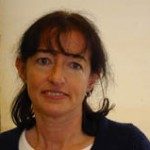Présentation
“The thymus is a specialized organ that provides a unique environment for T cell development and differentiation. The study the thymus-settling progenitors (TSPs) and how they differentiate is important for the characterization of the developmental stages that could be used in cell replacement therapy strategies, in lymphopenic patients. Recently, we have shown that the thymus is colonized by two successive waves of hematopoietic progenitors. The first wave of progenitors (E12-E15) has no B or myeloid potential and cells are committed to the T and dendritic cell pathways of differentiation. On the contrary, the second wave of progenitors (after E16) has B and myeloid potential. The major difference between both waves is the high expression of cell cycle regulatory genes like H19 in TSPs from the first wave1. The H19 gene encodes a 2.3-kb non-coding RNA and it was among the first identified imprinted genes (Igf2r, Igf2). This gene belongs to the imprinted locus H19-Igf2 conserved in mouse chromosome 7 and human chromosome 11. H19 is maternally expressed during embryogenesis. It was thought that H19 expression is strongly down-regulated in all tissues with the exception of skeletal muscle, in which H19 continues to be expressed. Interestingly, H19 is also expressed in DN3a adult thymocytes. We are seeking to unveil the role of H19 in early T cell development by comparing H19-/- to H19+/+ adult thymocytes to understand how an imprinted gene could regulate thymopoiesis.”





